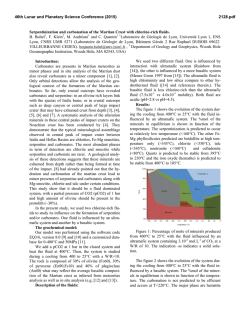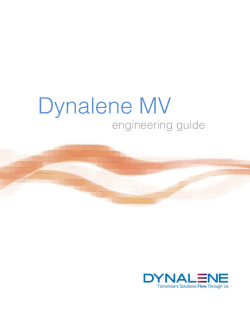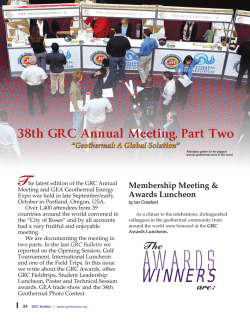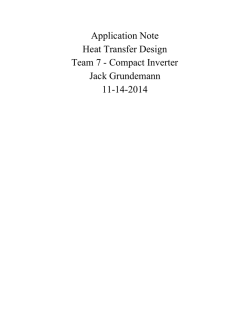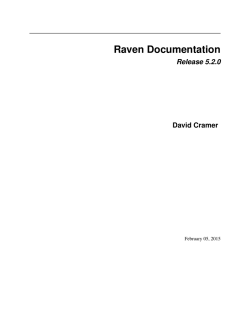
COMUNICACION 25 - Instituto Geológico y Minero de España
Electrical, nuclear and fluid column logging as a preliminary contribution to the hidrogeological characterisation of Serpa and Beja Areas (Portugal) Resumen Abstract 1. Introduction 2. Geological and hydrogeological conditions 3. Logging surveys 4. Logging interpretation 4.1. Lithology 4.2. Hidrogeology 5. Final remarks References Electrical, nuclear and fluid column logging as a preliminary contribution to the hydrogeological characterisation of Serpa and Beja areas (Portugal) Ramalho, E. C. (1), Paralta, E. (1), Torres, L. (1) RESUMEN El “Proyecto de Estudio de los Recursos de Agua Subterránea en el Alentejo”, financiado por la Comisión de Coordenación de la Región del Alentejo (CCRA) es un proyecto que ha sido creado para evaluar los recursos de agua de esta región del sur de Portugal, donde debido a las características climáticas muy secas que caracterizan la zona, la calidad y cantidad del agua superficial existente puede estar en riesgo durante los períodos de prolongada sequia. En los sistemas acuíferos que están siendo estudiados por el Instituto Geominero de Portugal (IGM) se han realizado diversos estudios hidrogeológicos (red de monitorización con piezómetros y evaluación de la calidad de la agua), de geofísica de superfície y de geofísica sub-superficial en los sondeos que posteriormente han sido aprovechados como piezómetros para la red de monitorización. El IGM ha realizado estudios hidrogeológicos en el Sistema Acuífero de los Gabros de Beja, en las zonas de Serpa y Beja. La geología del sistema acuífero estudiado está formada por rocas duras del Paleozóico, esencialmente gabros y dioritas. El contacto entre las calizas Pre-cámbricas y las rocas cuarzo-feldespáticas forma en la región de Serpa el límite oriental de la zona de estudio. En ambas zonas, las características hidráulicas del acuífero están fundamentalmente condicionadas por el grado de alteración de la roca. En las zonas superficiales, donde la capa de alteración puede llegar a tener profundidades del orden de los 30 m, el acuífero es libre. En las zonas no alteradas, la circulación de agua se realiza por porosidad secundaria. Para determinar estas características, se han realizado registros geofísicos eléctricos, nucleares y de columna de fluidos en diversos sondeos de la región, perforados en el ámbito del proyecto. Estos registros han sido usados para la caracterización litológica y de las propriedades del fluído en la zona de estudio, asi como para la identificación de fracturas y correlación con los parámetros hidráulicos. En este trabajo se presentan los resultados preliminares del estudio. ABSTRACT “Alentejo Groundwater Resources Study Project”, sponsored by the Alentejo Region Co-ordination Commission (CCRA), is a project that was created to evaluate groundwater resources of the Alentejo region (Southern Portugal), where due its dry climatic characteristics, surface water may become seriously affected in quantity and quality during long dry periods of time. In the aquifer systems whose study is being carried out by Mining and Geological Institute (IGM), many hydrogeological including piezometer net monitoring and water quality evaluation, and surface geophysical studies, were carried out. Logging surveys were also carried out in boreholes drilled to become part of those piezometer nets. Hydrogeological studies have been carried out by IGM in the Gabros de Beja aquifer system in Serpa and Beja areas. It is composed mainly by hard-rocks, namely gabbros and diorites. The eastern limit at Serpa region is the geological interface with Cambrian rocks (limestones and quartz-pheldspatic rocks) and PreCambrian “Black Series” formations (schists and gneisses with black interbedded pheldspars). The hydraulic properties of the aquifer are controlled mainly by the degree of weathering of the rock. In the shallower areas, the weathering layer can be up to 30 m thick and the aquifer is unconfined, while once crossed the weathering front and in the unweathered rock, water circulation is mainly through secondary porosity. In order to check out these features, several sets of electrical, nuclear and fluid column logs were carried out in a few wells, drilled within the scope of the project. The logs were used to help characterising lithology and fluid properties, as well as identifying fractures and correlating logging data with hydraulic parameters. Preliminary results are shown. mented by the drilling by IGM of 4 piezometers with different purposes, in selected places. Immediate logging just after drilling in uncased boreholes gives additional information about the aquifer system. 1. INTRODUCTION One of the first objectives of the “Alentejo Groundwater Resources Study Project” is the creation of hydrodynamic conceptual models to support mathematical models, that will allow a rational management of groundwater resources by the authorities. The piezometer net monitoring and water quality rigorous control that is being carried out, has been comple- (1) 2. GEOLOGICAL AND HYDROGEOLOGICAL CONDITIONS The study area is inserted in a wider region, located between Ferreira do Alentejo (NW) and Serpa (SE) (see figure 1), in the Ossa-Morena geotectonic unit. It is composed mainly by two units: the Maphic and Instituto Geológico e Mineiro, Estrada da Portela, Zambujal, 2720 Alfragide, PORTUGAL 279 Figure 1 – General geology of the Serpa-Beja area (adapted from Quesada et al., 1994 in Fonseca, 1995). 1- Odivelas Volcanosedimentary Complex. 2- Maphic and intermediate plutonic rocks (Beja Gabbros Complex). 3- Plutonic acid and sub-volcanic rocks (Baleizão Porphirs). 4- Beja-Acebuches Ofiolitic Complex (meta-gabbros and basic meta-volcanites). 5- Pulo do Lobo Accretion Terrain (SPZ schists). Ultramaphic Beja-Acebuches Complex and the Beja Gabbros Complex. Its northern limit is the Beja fault, and the southern limit is the Ferreira-Ficalho Overthrust, which is also the transition to the SouthPortuguese Zone (SPZ). mobilisation and re-precipitation of Ca2+ in the solution. The altered zone varies locally, and it may reach 30 meters thickness (Pais Quina, 1983). It creates an unconfined aquifer, hydraulically homogeneous. The gabbro-dioritic spot is one of the most productive formations of the region when comparing it with other fissured compact rocks, except karst systems. It has transmissivity values that may reach, in some areas, about 350 m2/day (in Beja area). It produces water flows that range from 1 to 15 l/s (exceptionally), with most frequent average values between 3 and 6 l/s. In Serpa region, the productivity of the Gabbro-dioritic Complex is, generally, lower than the observed in Beja area (Paralta & Costa, 1999). Therefore, according to these results, zones c and d (figure 2) seem to be the most promising aquifer formations located closer Predominant formations are gabbro-dioritic rocks covering an area of about 350 km2. In the Beja area, there is a clear gabbro predominance, while a greater variety of rocks, namely gabbros, limestones and quartzpheldspatic rocks crop out in Serpa area. As products of the chemical weathering of the gabbro-dioritic rocks, clay minerals have been produced, such as illite, chlorite and montmorilonite (Vieira e Silva, 1991). Up to the surface, as a direct result of the arid and dry climate, may occur calcretes, as a result of Figure 2 – Typical weathered profile of a gabbro-dioritic rock and its hydraulic characteristics (adapted from Paralta, 1998), based in gathered data from several drilling companies that have worked in Beja area. 280 Figure 3 – Registered parameters in the logging surveys carried out in the areas of Serpa and Beja. to the surface. Also according to reports from drilling companies that have worked in the area, the fractured zone (named zone d in figure 2) may be absent. According to the same reports, most wells drilled in the area reach the fractured zone d. Under the impermeable unaltered gabbro-dioritic rocks, water circulation occurs mostly through secondary porosity. to identify is the altered zone. In some cases, it can be accurately marked, such the case of figure 4, where VES modelling results (Schumberger array) over this area are perfectly correlated with electrical and nuclear logging curves, reflecting the shallower altered zone until about 12 meters depth, becoming progressively unaltered in depth (Gonçalves, 1999). A change in the scale of normal resistivities logs would make it clearer. Electrical and nuclear logs also provide a good help when correlated with drilling cuttings. However, as typical in this type of formations, gabbros and limestones show very low natural gamma radiation responses (Chappelier, 1992). Hydrochemical characterisation refers these waters to be mineralised (with TDS reported to range from about 400 mg/l to 900 mg/l), mainly as calcium-magnesium bicarbonate or magnesium-calcium bicarbonate. Due to the variation of relative concentrations of radioactive isotopes of uranium, thorium and potassium, natural gamma radiation is generally a very good lithological marker. Nevertheless, ultrabasic rocks are in general depleted of natural radioisotopes, and so it is not possible to differentiate them, although gabbros seem to have a lower natural gamma radiation response than limestones and diorites. These logs were used to identify fractures with alteration minerals (figure 5, 54 m deep) or zones with accessory minerals (figure 7, 34-48 m deep). Neutron curves are also useful in lithology identification, since massive unaltered rock without fractures or alteration products has a characteristic signature represented by higher values (figure 5, 33-52 m deep, for instance). 3. LOGGING SURVEYS In this area, several conventional logging methods, comprising electrical, nuclear and fluid column logs were used. Figure 3 shows the registered parameters and their main use in this project. Drilling methods were rotary and down-the-hole hammer and drilling fluid was always native water. In order to characterise lithology, fractures and fluid column, the logging sets were carried out just after drilling and then were jointly interpreted, to define well completion and determine rock and water characteristics. The logging procedures were always carried out some hours after fluid circulation to register temperature/fluid conductivity logs with the least disturbance as possible. Heat pulse flowmeter logs were never used with diverters or centralizers, due to the small well diameter or well irregularities. Therefore, flowmeter data must be considered to be semi-quantitative. No caliper probe was used. Due to the small borehole diameter, normal resistivity 16” tool gives information about formation resistivity (R t); nevertheless, formation identification is not always easy, since, in some cases, Rt values may be quite similar. On the other hand, SPR curves, although qualitative, are strongly correlated with other electrical logs, such as normal resistivities. 4. LOGGING INTERPRETATION 4.2. Hidrogeology 4.1. Lithology In this type of hard rocks (even in the altered zones), productive zones occur mostly due to secondary porosity immediately below the surface altered layer. After reaching zones c and d (figure 2), before the Lithology identification assumes an important role in these logging surveys, since most boreholes have no core recovering. One of the most important features 281 Figure 5 –Selected logs from borehole 2: electrical (RN 8’’ and 16’’), nuclear (neutron and natural gamma radiation) and fluid column (flow and geothermal gradient) logs. ture logs every 2 meters) were used to identify productive fractured zones. These logs have proved to be more sensitive to temperature changes caused by water movement than temperature logs themselves (Beck and Balling, 1988). Through the observation of these logs (figures 5, 6 and 7) the disturbances on the first meters of the log are representative of the unconfined characteristics of the aquifer, with water circulation through the altered zone. The unaltered zone shows a generally constant geothermal gradient, which is considered to be more or less representative of the regional geothermal gradient (which, in this area, is about 20 mK/m). Figure 4 –Selected logs from borehole 1: electrical (RN 8’’, 16 ‘’ and SPR), nuclear (neutron and natural gamma radiation) and fluid column (flow) logs. unaltered rock, fractures play a more and more important role in water circulation and influence water fluid conductivity. Therefore, fracture identification is very important in this type of formations. In the absence of a caliper tool, this has been achieved with nuclear tools, especially neutron-neutron tool. In fact, its ability to detect either the water contained within the fracture, or the hydrous silicates as products of chemical alteration in and around the fracture (Howard, 1990), in combination with flowmeter logs interpretation, enables productive fracture identification. On the other hand, local enlargement of borehole diameter caused by fractures, decrease neutron tool response, indicating, in this case, the presence of H+ ions. Geothermal gradient logs (calculated after tempera- The geothermal gradient disturbances occurring in depth, correlated with fractures, correspond to water circulation (inflows and outflows) in the fracture planes. As it can be seen in figures 5, 6 and 7, there is a correspondence between changes in flowmeter logs and geothermal gradient deviations to the average regional geothermal gradient in the area. In some cases, this is caused by water outflow circulation in these planes, such as the case of borehole 3 (figure 6), at 45m depth. It shows simultaneously a decreasing response of flow, neutron and electrical and geothermal gradient log, indicating a local decreasing in fluid 282 last considerations. However, as described in section 2, most wells drilled in the area only reach the fractured zone just over the unaltered rock. 5. FINAL REMARKS Although this universe of 4 logged boreholes, is not for sure, a population large enough to establish regional trends, some hydraulic considerations were made, supported by these electrical, nuclear and fluid column logs. According to other hydrogeological information from the area, such as pumping tests results and chemical analysis, logging data helped individualising surface characteristics in depth and to a better understanding of crossed formations and fluid column. REFERENCES BAYÓ DALMAU, A., 1988. Otros registros usuales para aguas subterráneas. Aguas subterráneas: Instrumentacion, Medida y toma de muestras. Prensa XXI S.A. – Barcelona. BECK, A. E. & BALLING, N., 1988. Determination of virgin rock temperatures. In: Haenel, R. Rybach, L. and Stegena (Editors), Handbook of Terrestrial Heat Flow, Chapter 3, Solid Earth Sciences Library, Kluwer Academic Publishers: 59-85. CHAPPELIER, D., 1992. Well logging in hydrogeology. A.A. Balkema Ed.: 175. FONSECA, P., 1995. Estudo da Sutura Varisca no SW Ibérico nas regiões de Serpa-Beja-Torrão, Alvito-Viana do Alentejo. Tese de Doutoramento, Universidade de Lisboa, 325p. Figure 6 –Selected logs from borehole 3: electrical (RN 16’’), nuclear (neutron and natural gamma radiation) and fluid column (flow, temperature and geothermal gradient) logs. Lithology inferred only by geophysical logs between 25 and 60 m deep. GONÇALVES, R., 1999. Prospecção geoeléctrica na Bacia da Ribeira da Chaminé (Beja). Relatório interno do IGM, no âmbito do ERHSA: 22. HOWARD, K. W., 1990. Geophysical well logging for the detection and characterisation of fractures in hard rocks, Geotechnical and Environmental Geophysicals, Stanley H. Ward Ed., IG ner 5, Vol.1: Review and Tutorial: 287-306. column temperature. Relationship between geothermal gradient and neutron logs (figure 8) may be explained as follows: values from unaltered zones cluster around a geothermal gradient of about 20 mK/m, while outliners are caused by water circulation in altered zone or by surface temperature influence. KEYS, W. S.,1990. Borehole geophysics applied to groundwater investigations. Techniques of Water-Resources Investigations of the United States Geological Survey. Book 2, Chapter E2: 150. Short “air lift” pumping tests were carried out, and transmissivity values calculated with Logan method ranged from about 1.5 m2/day to 30 m2/day. These differences, besides local geological features, are probably related with screen positioning; in fact, the highest transmissivity values occur when the majority of screens are placed in fractured zones below the unaltered zone. PARALTA, E. & COSTA, A. M., 1999. Hidrogeologia das Rochas Gabróicas da região de Serpa (sector oriental do aquífero dos “Gabros de Beja”). IV Simpósio de Hidráulica e Recursos Hídricos dos Países de Língua Oficial Portuguesa (SILUSBA). Coimbra. PARALTA, E., 1998. Caracterização hidrogeológica da zona da Ribeira da Chaminé (aquífero dos Gabros de Beja) – Resultados preliminares. IV Congresso da Água. According to most of fluid conductivity logs, the least mineralised water flows from fractures, are located at deeper levels after crossing an unaltered zone, sometimes with decreases of more than 100 µS/cm from the most shallow zones (figure 9). Correlation coefficient of fluid conductivity and flow is about 0.7 for most wells, which is in close agreement with these QUINA, P., 1983. Pesquisas e captações em gabro-dioritos. Seminário sobre Hidrogeologia de rochas compactas fissuradas, APRH, Lisboa. VIEIRA E SILVA, J. M., 1991. Alteração de uma rocha gabróica do Baixo Alentejo. Memórias e Notícias, Publ. Mus. Lab. Mineral. Geol., Univ. Coimbra, nº 112: 373-383. 283 Figure 7 – Selected logs from borehole 4: electrical (RN 16’’), nuclear (neutron and natural gamma radiation) and fluid column (flow, temperature and geothermal gradient) logs. Figure 8 – Grad. T (mK/m) x Neutron (CPS). Data from borehole 3. 284 Figure 9 – Fluid conductivity (µS/cm) x Flow (L/min). Data from borehole 2. 285
© Copyright 2025

